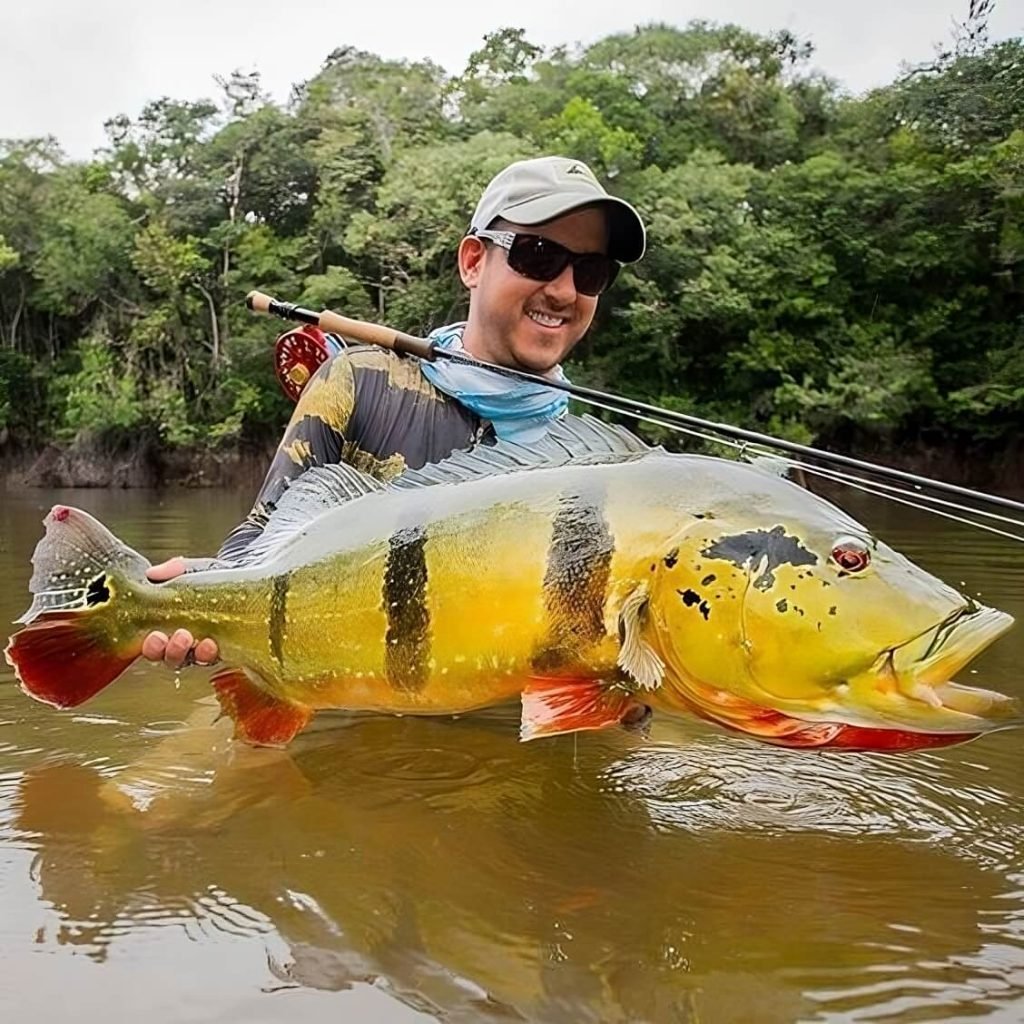Sport fishing in Brazil has become increasingly popular as a recreational activity that combines a passion for fishing with an appreciation of the country’s exuberant nature. With an extensive coastline lapped by the Atlantic Ocean, a vast network of rivers and lakes, as well as a rich aquatic biodiversity, Brazil offers a wide variety of options for sport fishing enthusiasts.
Sport fishing in Brazil can be practiced in several ways, including freshwater fishing in the Amazon, Pantanal, São Francisco and many other rivers, as well as saltwater fishing in the coastal regions of the country. The diversity of species in the Brazilian regions is impressive. It offers unique opportunities to catch fish such as tucunaré, dourado, snook or pirarara, among others.
Regulations for Fishing Sustainability in Brazil
- Sport fishing is regulated in Brazil to ensure the conservation of fishery resources and the sustainability of species. The Brazilian Institute of Environment and Renewable Natural Resources (IBAMA) and the State Secretariats of Environment are responsible for establishing and overseeing the rules and regulations for sport fishing, including catch limits, minimum fish sizes, and breeding seasons.
In addition to rivers and seas, Brazil also offers sport fishing options in lakes, reservoirs and fishing and payment areas, which are places created especially for recreational fishing, where anglers can pay for their catch.
Sport fishing in Brazil goes far beyond the fishing activity itself. It is an experience that provides anglers with unique moments of connection with nature, contemplation of breathtaking landscapes and the opportunity to learn about the culture and traditions of local communities. Sport fishing also plays an important role in the development of sustainable tourism. It contributes to the local economy and promotes the conservation of aquatic ecosystems.
In some regions of Brazil, such as the Amazon and Pantanal, sport fishing is practiced in a responsible and conscious manner, with a “catch and release” approach, in which fish are released after being caught, preserving populations and contributing to maintaining the balance of ecosystems.
In short, sport fishing in Brazil is an exciting and diverse activity. It offers anglers the opportunity to explore the richness of the country’s aquatic ecosystems, while contributing to the conservation of fishery resources and the appreciation of Brazilian nature and culture.
What are the benefits of no-kill fishing?

Catch and release, also known as “catch and release”, is a common practice in sport fishing. It consists of returning caught fish alive and healthy to the water, rather than keeping them for consumption. This ethical and sustainable approach brings a number of significant benefits to aquatic ecosystems. It also has a positive impact on sport fishing as a whole. Below, we highlight some of the main benefits of catch-and-release fishing:
Conservation of fish stocks:
- Releasing caught fish, especially large fish and endangered species, helps conserve fish stocks. This practice contributes to the preservation of aquatic biodiversity by helping to maintain healthy ecosystems. This ensures that species have the opportunity to reproduce and renew their populations, preventing overfishing and species decline.
Sustainability:
- Catch and release is a sustainable practice that enables sport fishing in a responsible manner. This methodology avoids compromising the regeneration capacity of aquatic ecosystems. In this way, future generations will be able to enjoy this activity without depleting natural resources.
Promotion of sport fishing:
- Catch and release is a fundamental pillar of sport fishing, as it emphasizes conscious capture and respect for nature. The increase in the number of sport fishing practitioners promotes an activity that provides entertainment and leisure. In addition, this practice contributes not only to the conservation of ecosystems, but also to the development of sustainable tourism.
Equilibrium of aquatic ecosystems:
- By releasing captured fish, the natural balance of aquatic ecosystems is maintained. Fish play a crucial role in the food chain, being fundamental to the balance of aquatic ecosystems. They also control populations of other organisms and contribute significantly to the health of aquatic environments as a whole.
Improvement of genetic quality:
- The practice of catch-and-release makes it possible to release fish of better size and physical condition for reproduction. This can lead to improved genetic quality of fish populations over time.
Biodiversity preservation:
- By releasing captured species, a significant contribution is made to the preservation of aquatic biodiversity. This makes it possible to appreciate and protect not only the fishermen’s target species, but also others present in the ecosystem.
Contribution to scientific research:
- Catch and release can play a crucial role in the collection of scientific data. These data focus on fish populations and the health of aquatic ecosystems. Anglers and fishing guides have the opportunity to collaborate with researchers. They can provide valuable information on the size, health and distribution of the species caught.
In summary, catch-and-release represents a beneficial and responsible sport fishing practice. Its approach values the conservation of fish stocks and the preservation of aquatic ecosystems. In addition, this ethical approach contributes to the development of sustainable tourism. It also fosters the appreciation of the rich aquatic biodiversity, providing a rewarding and conscious experience for sport fishing enthusiasts.





